Karst Regions of the World

What environmental conditions do you think are necessary for the development of karst topography? How would temperature affect the development of karst landscapes?
Karst topography is limited to areas that have limestone rock close to the surface, and adequate precipitation to dissolve the limestone. Humid and warm climates encourage the development of karst topography because they have adequate water and warmth. Thus, karst topography is most common in humid tropical areas. Cold environments, on the other hand, discourage the development of karst features because the cooler temperatures slow the eating away of the limestone.
Click through the images to learn about some famous karst regions of the world.
- The so-called, Stone Forest of China, is one of the most prominent karst environments in the world. These large stone structures began as a single layer of limestone 270 million years ago. Tectonic activity lifted the rock layer and water seeped through cracks in the limestone’s surface. The cracks deepened with time, forming each individual stone "tree" in this stone forest. As you see, karst topography is not limited to the underground. Karst environments can develop anywhere you have limestone rock and enough water for dissolution weathering to take place.
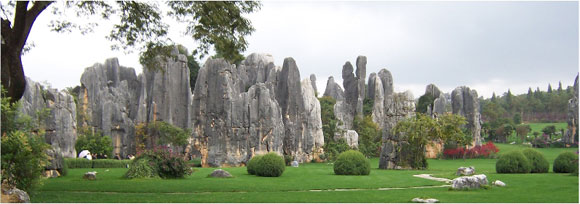
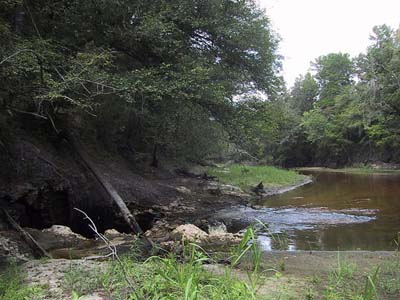
The U.S. state of Florida has more sinkholes than any other state. In this picture, Florida’s Alapaha River disappears into the sinkhole you see in the left side of the photo. Watch this short news clip to see how a sinkhole damaged a Florida home. 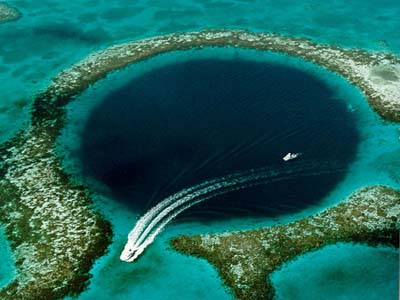
The Great Blue Hole is off the coast of Belize and is believed to be the largest sinkhole on Earth. It has been filled with surface water.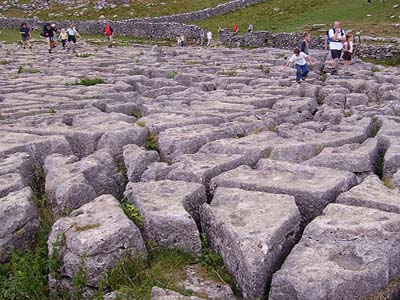
The Yorkshire Dales in England have a distinct type of karst topography, called limestone pavement. Limestone pavement consists of flat, incised surfaces of limestone, and resembles artificial pavement stones. It forms when glaciers wear away at limestone bedrock.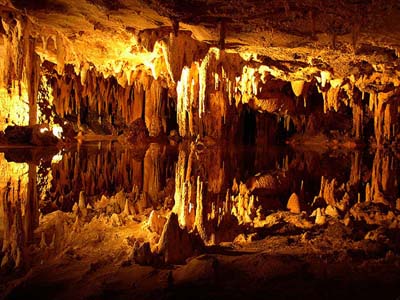
The Shenandoah Valley of Virginia is another example of karst topography. This cave is called Luray Caverns. Within Luray Caverns is a collection of stalactites that resemble the pipes of a pipe organ. When struck with a rubber mallet, each individual stalactite produces a distinct musical note. If you strike several stalactites in succession, and in a given order, you can produce an entire tune—just like playing a piano. People have used the "Great Stalacpipe Organ" for more than a century to produce a variety of folk and religious music. It is the largest musical instrument in the world. Listen to its music from this audio recording.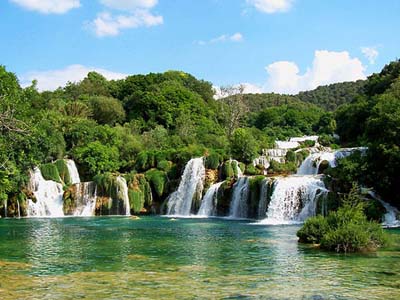
Croatia’s Krka National Park is dotted with jagged limestone that has been partially dissolved, leaving behind numerous cliffs and waterfalls that feed into sinkholes.
© KC Distance Learning. All rights reserved.











